This site is part of an affiliate sales network and may earn compensation when a customer clicks on a link, when an application is approved, or when an account is opened. This relationship may impact how and where links appear on this site. This site does not include all financial companies or all available financial offers. Zachary Abel is also a Senior Advisor to Bilt Rewards. Terms apply to American Express benefits and offers. Enrollment may be required for select American Express benefits and offers. Visit americanexpress.com to learn more Opinions, reviews, analyses & recommendations are the author’s alone, and have not been reviewed, endorsed or approved by any of these entities.
Complete Guide to Chase Credit Cards
Chase offers some of the very best credit cards in the market – many of them are on our Top Credit Cards page. Chase has an incredible program called Chase Ultimate Rewards which have been integral in achieving our travel goals. It’s no wonder that Chase cards that earn Ultimate Rewards are some of the most valuable in the credit card marketplace, and we strongly recommend you earn them.
We know that things can get confusing.
There are so many cards in the market and so many different programs, we figured it could be helpful to break down the Chase program in order to help you choose the cards that fit your goals best. I’ll show you how I’ve built my wallet, but ultimately our goal is to give you the education so you can make the most informed decision to build your wallet and achieve your travel goals.
We will discuss how many of the cards listed below fit into the system and how you can use them effectively
- Ultimate Reward Earning Cards
- Airline
- Southwest Rapid Rewards® Priority Credit Card
- Southwest Rapid Rewards® Premier Credit Card
- Southwest Rapid Rewards® Plus Credit Card
- Southwest® Rapid Rewards® Performance Business Credit Card
- United Gateway(SM) Card
- United(SM) Explorer Card
- United Quest(SM) Card
- United Club(SM) Infinite Card
- United(SM) Business Card
- Aeroplan® Credit Card
- Hotel
If you just want a broad tip…
Personally, I think having a Chase Sapphire Preferred paired with a Chase Freedom Unlimited or Chase Freedom Flex is a super strong base. It would cost you $95 a year in annual fees, give you access to transfer partners, and earn great category bonuses.
I break down Chase credit cards into 3 Categories
Whether you’re picking up a personal or business credit card from Chase you can break their cards down into 3 categories and they are based on the way they earn points. I currently have cards from each category and they serve different purposes in my wallet.
1) Cards that earn Cashback ( in the form of Ultimate Rewards )
The Ultimate Rewards earned from these cards can be used as cashback deposited into your bank account, towards gift card, or for other limited purposes within the Ultimate Rewards portal. What they cannot be used for is transferring into partners. This can be confusing since the Ultimate Rewards earned by premium Chase cards can be transferred and they carry the same name.
However, Chase Ultimate Rewards has a fantastic feature. If you carry one of the 4 Chase credit cards listed below alongside a Chase premium card you can combine those points into the premium account. For instance, when you combine points earned from the Chase Freedom Flex into a Chase Sapphire Preferred, they can be transferred into partner programs or redeemed at the Chase Sapphire Preferred valuation of 1.25c per point. This is a huge reason to carry one of the 4 cashback cards below alongside a Chase premium card.
Examples: Chase Freedom Flex, Chase Freedom Unlimited®, Chase Ink Business Unlimited®, and Chase Ink Business Cash all earn cashback, but they will show up in your account as “Ultimate Rewards.”
2) Cards that earned a fixed currency
When you carry a credit card that is branded to a specific program, you’re limited to using the points you earn from credit card purchases to that program. Many of these cards also come with additional perks like free checked bags, elite night credits, annual free night certificates, perks when flying or staying, etc. I keep quite a few of these kind of cards in my wallet purely because the benefits they provide outweigh the cost; however, I don’t put the bulk of my everyday purchases on these cards because I’m limited to using the points within the program.
For instance, I carry the Chase World of Hyatt credit card. I use it when I stay at Hyatt hotels, it offers a free night every year, and just recently cardholders got 25% off award stays. All of those perks easily outweigh the annual fee. But, what if I want to use my points for a flight? The points I earn are only redeemable within the Hyatt program. This is why I keep cards that earn transferrable points like the Chase Sapphire Preferred and Chase Ink Business Preferred as well. Both of those cards earn points that could be transferred into Hyatt if I want a hotel stay, but also into a bunch of airlines if I’d like to use them on a flight.
Examples: United, Southwest, Marriott, Hyatt, British Airways, Iberia, Aer Lingus, IHG, and Disney are all examples of Chase cards that earn points with fixed use.
3) Cards that earn Flexible Ultimate Rewards that can be transferred into partners ( our favorite cards )
These are Chase cards that earn premium Ultimate Rewards that can be redeemed within Chase Travel for 1.25 to 1.5c per point, but also have the ability to transfer into Chase Ultimate Rewards transfer partners.
When you see pictures of me in crazy luxurious cabins, the odds are I have used a transfer partner to access those experiences. The reason? These transfer partner programs maintain their own redemption charts. Having points that can be moved into a number of programs means you have flexibility when it comes time book your trip.
For instance, if I really want to fly business class to Europe for a honeymoon I can check the price in points within Chase Travel. I can then compare that to the price the transfer partners are offering as well. If Chase Travel tells me an Air France flight to Paris is 200k points, but a transfer partner Air France is pricing it at 65k + $230 I can make the decision how I’d like to use those points. If I want to go with the transfer option, I’d simply transfer the points from Chase into Air France and book it via Air France. I always recommend phoning the airline to place those flights on hold just in case the transfer isn’t instantaneous. Regardless…it gives you a ton of options.
Examples: Chase Sapphire Preferred®, Chase Sapphire Reserve®, Chase Ink Business Preferred®
Holding any of the three cards listed above also increases the value of your cashback cards. For instance, if you carry a Chase Sapphire Preferred® and a Chase Freedom Unlimited®, you can combine your Chase Freedom Unlimited® points into your Chase Sapphire Preferred® account. By doing so not only upgrades their redemption price in Chase Travel from 1c to 1.25c, but it also means they can be moved into transfer partners.
That is a huge deal!
How to maximize the Chase Ultimate Rewards system
As discussed above, Chase Ultimate Rewards are broken into two kinds: Those that can be transferred to partners and those that can’t. You want the build up the ones that can.
By holding cards in both categories you can maximize category bonus earn rates, put spend on the cards that earn the most bonus points, and then combine them together into an account that allows transfers into partner programs, or a higher redemption rate in Chase Travel. Let’s look at the 2 types of Chase Ultimate Rewards…
- Ultimate Rewards that are earned from cashback cards like the Chase Freedom Flex and Chase Freedom Unlimited, or on the business front the Chase Ink Business Unlimited and Chase Ink Business Cash
- These can be redeemed for statement credits and limited items within the Chase Ultimate Rewards portal
- Ultimate Rewards that are earned from Chase premium cards which have increased value .
- These can be redeemed with Chase Travel
- Chase Sapphire Preferred® at 1.25c
- Chase Sapphire Reserve® at 1.5c
- Chase Ink Business Preferred® at 1.25c
- They can also be transferred into Chase Transfer partners
- These can be redeemed with Chase Travel
Chase Ultimate Reward partners
The list of partners below maintain their own award charts. This opens up the possibility that you could take your Chase Ultimate Rewards and convert them into those partner programs to access their award sweet spots. This is how I have been able to fly in some of the world’s best cabins, stay in fine hotels, and earn elite status faster.

A few examples of using Chase Ultimate Rewards to achieve aspirational travel
- Emirates First Class
- 85k from JFK to Milan or Newark to Athens
- Iberia Business Class
- Off-peak 34k from ORD, BOS, JFK to Madrid
- Virgin Atlantic Upper Class
- 47.5k JFK To London
- United Polaris Business Class
- 80k US to Europe
- Air France Business Class
- 55k Paris to Washington D.C.
- Singapore Suites
- 53k Beijing to Singapore
- British Airways First Class
- 25k upgrade from Business LAX to LHR
- Alila Uluwatu
- 30k Hyatt points per night
How to choose the right Chase credit card to start with?
Chase cards can be really good on their own, but if you really want to extract the most value out of every dollar you spend, a team will get the job done better. Every card that I hold in my wallet was chosen to fill a role. My team is quite large, you may choose to just have a 2 person team, and that’s fantastic. The goal is to give you the education so you can make choices based on your situation.
Your Chase wallet should revolve around a card that gives you the ability to transfer to partners, personally I recommend a Chase Sapphire Preferred®
The captain of your team should be a card that earns Ultimate Rewards that can be transferred. This unlocks the potential of all your other cards by opening up the possibility of combining all the points you earn into your most valuable account.
Examples: Chase Sapphire Preferred®, Chase Sapphire Reserve®, Chase Ink Business Preferred®
Why the Chase Sapphire Preferred®?
The annual fee is under at $100, it gives you great travel protection, your points are redeemable for 1.25c in Chase Travel if you choose to not transfer them, and you get a solid 2x on dining and travel without a cap. Does that mean I don’t like the Chase Sapphire Reserve? Absolutely not – it’s a great card, but it comes with a far heftier annual fee of $550. There are a lot of reasons someone may choose to pick up that card, but personally, I think you can get incredible value out of having a Chase Sapphire Preferred and pairing it with a Chase Freedom Unlimited or Chase Freedom Flex and save the extra money.
The Chase Ink Business Preferred® on the other hand, is hands down my favorite business credit card, and comes with a low $95 annual fee. If you have a small business, I would highly recommend you consider it. It comes power packed with benefits, including cell phone insurance, great bonus categories, and points earned from personal cards can be combined with it.
Choosing your additional players/cards based on category bonuses
Once you have your captain picked, now it’s time to pick players that add the most value to your team. Two of our favorite cards are the Chase Freedom Unlimited and Chase Freedom Flex.
Both of these cards earn points in the following way:
- 5%/5x on travel purchased through Chase Travel
- 3x/3% on Dining and Drugstore Purchases
However…here is the biggest differences
- Chase Freedom Flex offers quarterly rotating 5x category bonuses, capped at $1500 per quarter
- It’s also a Mastercard World Elite
- Chase Freedom Unlimited earns 1.5x on every purchase without limit
Here’s a look at prior year Freedom Flex Bonus Categories. You can see a lot of the same categories pop up over the years. If you think you may spend quite a bit of money on these categories, it may make sense for you to get a Chase Freedom Flex. If you don’t spend a lot…go with the Chase Freedom Unlimited.
Sign up rules
5/24
- Almost all of Chase’s cards are a part of their 5/24 rule. This means that you can not sign up if you have opened more than 5 credit cards in the last 24 months.
1/48
- Specific to the Chase Sapphire Preferred and Reserve, you can not receive a welcome bonus if you have received one on either the Chase Sapphire Preferred or Chase Sapphire Reserve within the last 48 months.
Only one Chase Sapphire Premium product
- If you currently hold a Chase Sapphire Preferred or Reserve you cannot sign up for the card. Those who currently hold both can be grandfathered into holding both, but if you only have one, you’re restricted from another.
2/30
- You can only be approved for 2 cards in a 30 day timeframe
No limit on cards
- There is no preset limit on the number of cards you can keep with Chase.
In fact, I personally carry 8 cards and I am looking to add to that number in the near future. Here’s what I’m currently carrying
Qualifying for the sign up bonus
If you have had a Chase product in the past, it’s possible to get it again; however, you can’t get a sign up bonus until 24 months have passed. If you’re looking at a Sapphire Preferred or Reserve…it’s 48 months and you can’t hold them concurrently.
Choosing a Chase Credit Card that doesn’t earn Ultimate Rewards
While we prefer to put most of our spend Chase cards that earn Ultimate Rewards that doesn’t mean we don’t extract value from other options that Chase also offers. These are called cobrand cards and they earn the points of the program they are a part of…
Examples: United, Southwest, Marriott, Hyatt, British Airways, Iberia, Aer Lingus, IHG, and Disney are all examples of Chase cards that don’t earn Ultimate Rewards
Why would you want to keep a cobranded Chase card?
Elite status
The biggest reason is because you’re a loyalist of that brand and will use the card to help you achieve Elite status. For instance, the Marriott branded cards will give you elite nights to help you get Marriott status quicker. The same goes for the United cards…they can offer Elite miles after hitting certain spend thresholds. The Southwest cards will help you get closer to achieving a Companion Pass.
Brand loyalty benefits:
Cards from United offer free checked bags, discounts in flight, etc. These can add up for more than the annual fee pretty easily. Other perks, like a companion certificate, offered by the British Airways card after $20k spend in a year may be advantageous if you’re sitting on a heap of BA Avios.
My favorite reason…free nights
Chase offers cards from IHG and Hyatt. Both cards offer free night certificates just for keeping the card. As long as you pay the annual fee you’ll get a free night certificate up to a certain category at their hotels around the world. This can be incredibly valuable. You’ll also get targeted promos as a cardholder – for instance, Hyatt recently had a 25% discount on award stays for Wold of Hyatt credit cardholders. If you’re planning a longer trip…you could end up savings 10k plus points.

What Chase cards do I currently hold?
Here’s a list of the cards that I currently have from Chase:
- Chase Sapphire Preferred
- Chase Freedom
- Chase IHG Rewards Select
- Chase World of Hyatt Card
- Chase Ink Business Preferred
- Chase Ink Business Preferred (2nd business )
- Chase Ink Business Cash ( for 2 businesses )
- Chase Ink Business Unlimited
I’d really like to add to this list with the Chase Freedom Flex and the Chase Freedom Unlimited. In fact, the only reason I don’t have a Freedom Unlimited already is because I keep the business version of it. These are cards I have plans to pick up before the year is over. I may also peel off my extra Chase Ink Business Preferred
Referring your Chase card
This is another important feature of the Chase credit card system…referrals. I keep a separate Chase Referral page that you can leave your links on. Also, I’d recommend watching the video below that speaks about how I earn over 500k points a year on referrals.
Read our Complete Guide to Chase Referrals here
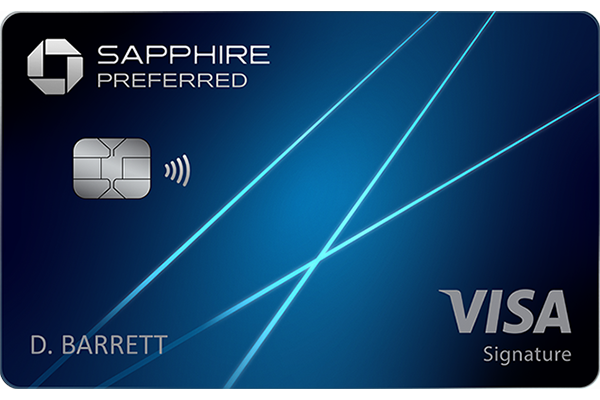 | Chase Sapphire Preferred | 100k after $4k spend 5x Chase Travel 3x dining + select streaming 3x groceries |
|---|---|---|
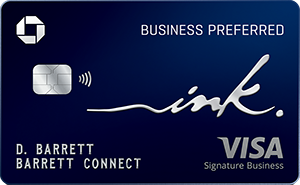 | Chase Ink Business Preferred | 100k after $15k spend 3x Travel/Internet/Cable Free Cell phone insurance $95 Annual Fee |
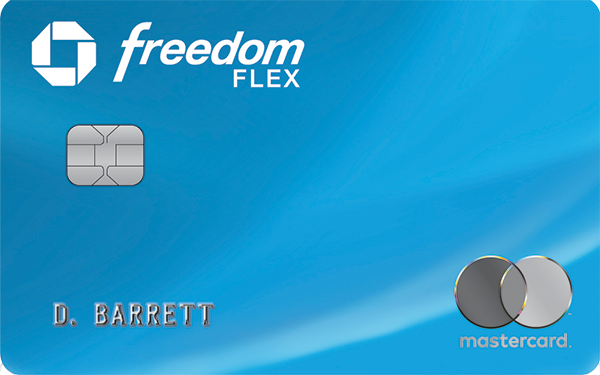 | Chase Freedom Flex | $200 after $500 spend 5x rotating categories No Annual Fee |
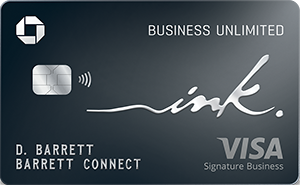 | Chase Ink Business Unlimited | Earn $750 after $7500 spend in 3 months. Earn 1.5x on every purchase |
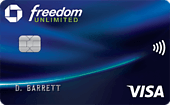 | Chase Freedom Unlimited | Earn $200 after $500 spend in 3 months |
Other Useful Chase Information
- If you aren’t approved for a Chase card it’s worth calling Reconsideration
- Read all about Credit Card Reconsideration here
- Chase will often let you reallocate credit lines between cards
- This can be helpful with getting approved
- Chase business cards aren’t reported on your personal credit report
- You can upgrade or downgrade your card within the same product
- I.E. you could upgrade your Chase Freedom Unlimited to a Chase Sapphire Preferred.
Overall:
To make things very simple…I would highly recommend you keep a Chase Sapphire Preferred alongside either a Chase Freedom Flex or a Chase Freedom Unlimited. This would give an outstanding ability to earn points with great category bonuses, transfer your points if you so desire, and keep your fees low.
If you’re looking to add on to that basic pairing. I would consider building out your Chase team with cards that increase your ability to earn points faster via category bonuses, and cards that earn you partner elite status, free nights, or flights benefits.
Opinions, reviews, analyses & recommendations are the author’s alone, and have not been reviewed, endorsed or approved by any of these entities.



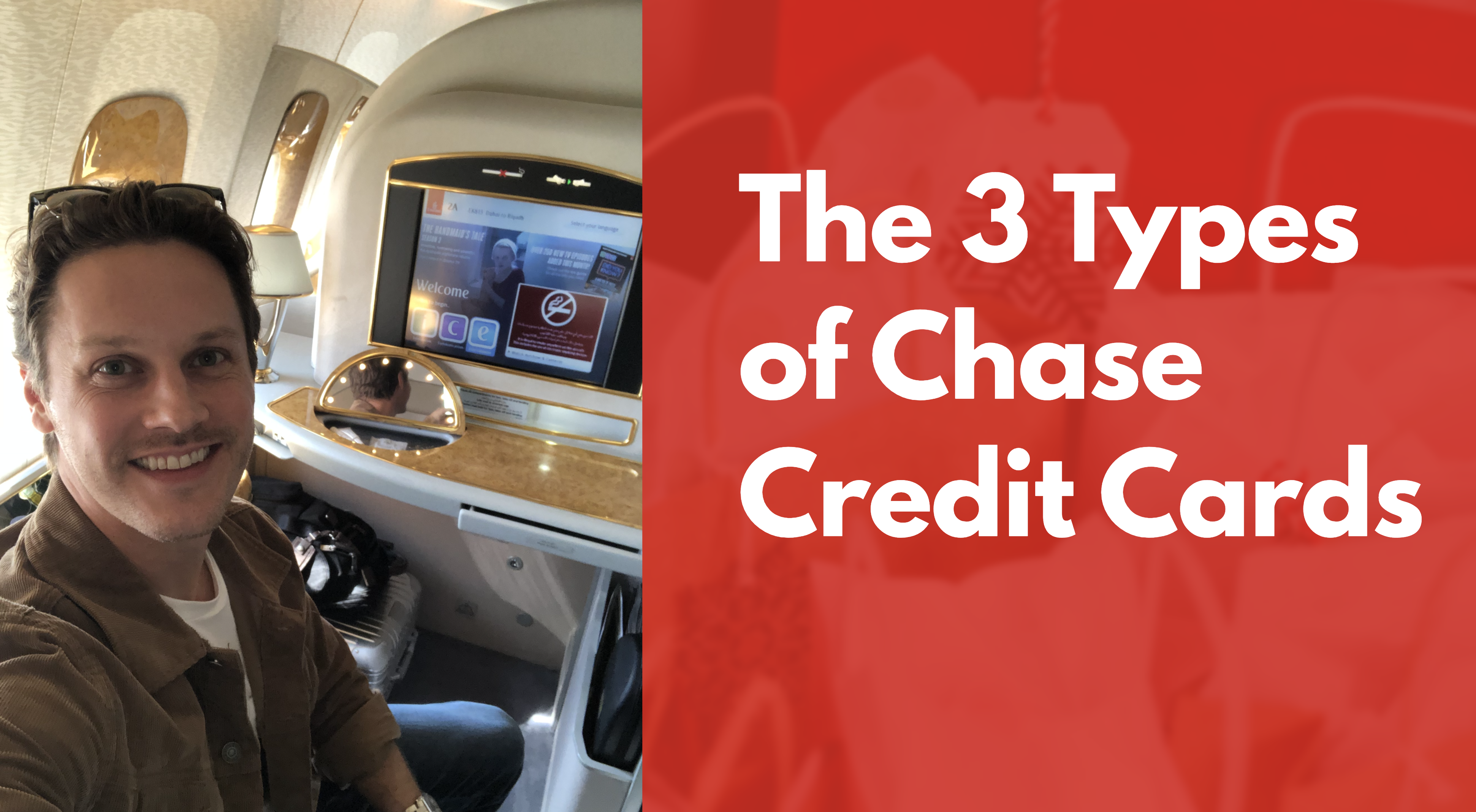
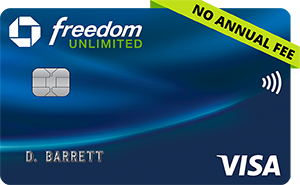
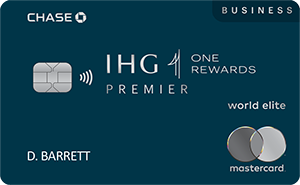

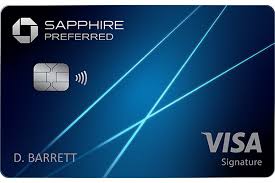
The responses below are not provided or commissioned by the bank advertiser. Responses have not been reviewed, approved, or otherwise endorsed by the bank advertiser. It is not the bank advertiser's responsibility to ensure all posts and/or questions are answered.